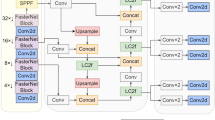Abstract
The underwater robot is one of the most important research tools in deep-sea exploration where the high pressure, extreme darkness, and radio attenuation prevent direct access. In particular, Autonomous Underwater Vehicles (AUVs) are the focus of much attention since they do not have tethered cables and can navigate freely. However, ideally, AUVs should be able to make independent decisions even with limited information using mounted sensors. That is, AUVs need powerful programming and low-power consumption computer systems which enable them to recognize their surroundings and cruise for long distances. Thus, modern computer development makes it possible for AUVs to be one of the most practical solutions for deep-sea exploration and investigations. As a next-generation AUV, we have been developing a Sampling-AUV that can dive into deep-sea regions and bring back samples of marine creatures in order to more fully understand the marine ecosystem. Our mission scenario calls for the Sampling-AUV to transmit deep-sea floor images to scientists on the research ship using acoustic communication. The scientists select the marine creatures to sample, and the AUV is tasked with retrieving them. The AUV then returns to the area where the interesting marine creatures have been observed, and collects and brings back samples. In order to realize this mission scenario, the sea-floor images need to be enhanced to assist the judgment of the scientists as the color red attenuates rapidly and the images become bluish while small differences in AUV altitude to the sea-floor also affect the brightness of the images due to light attenuation. Moreover, although underwater acoustic communication is slow and inaccurate, the AUV is required to select interesting images that include marine life. In this paper, we propose a deep-sea floor image enhancement method based on the Retinex theory and its performance was evaluated using deep-sea floor images taken by an AUV. The performance of the image enhancement was evaluated through crab recognition.
















Similar content being viewed by others
Change history
18 April 2017
An erratum to this article has been published.
References
Bazeille S, Quidu I, Jaulin L, and Malkasse JP (2006). Automatic underwater image pre-processing. CMM’06. pp. 1–8.
Bewley M, Douillard B, Nourani-Vatani N, Friedman A, Pizarro O, and Williams S (2012). Automated species detection: an experimental approach to kelp detection from sea-floor AUV images. Australas Conf Robot Autom pp. 1–10.
Boudhane M, and Nsiri B (2016). Underwater image processing method for fish localization and detection in submarine environment. J Vis Commun Image Represent 39 pp. 226–238.
Csurka G, Dance C, Fan L, Willamowski J, and Bray C (2004). Visual categorization with bags of keypoints. Workshop on statistical learning in computer vision 1 pp. 1–16.
Hulburt EO (1945). Optics of Distilled and Natural Water. J Opt Soc Am 35(11), pp. 698–705.
Jaffe, J. S. (1990). Computer modeling and the design of optimal underwater imaging systems. IEEE J Ocean Eng pp. 101–111.
Junku Y, Ura T, Bekey G (1996). Underwater robots. Springer US
Land EH, and McCann JJ (1971). Lightness and retinex theory. JOSA 61(1). pp. 1–11.
LOWE DG (2004). Distinctive image features from scale-invariant keypoints. Int J Comput Vis pp. 91–110.
Maki T, Sato Y, Matsuda T, Shiroku RT, and Sakamaki T (2014). AUV Tri-TON 2: An intelligent platform for detailed survey of hydrothermal vent fields. IEEE/OES Autonomous Underwater Vehicles (AUV). pp. 1–5.
McGlamery BL (1980). A computer model for underwater camera systems. Ocean Optics VI. Int Soc Opt Photonics pp. 221–231.
Nakatani T, Ura T, Ito Y, Kojima J, Tamura K, Sakamaki T, et al. (2008). AUV” TUNA-SAND” and its Exploration of hydrothermal vents at Kagoshima Bay. OCEANS 2008-MTS/IEEE Kobe Techno-Ocean. pp. 1–5.
Nishida Y, Nagahashi, K, Sato, T, Bodenmann, A, Thornton B, Asada A, et al. (2015). Development of an autonomous underwater vehicle for survey of cobalt-rich manganese crust. OCEANS 2015-MTS/IEEE Washington. pp. 1–5.
Nishida Y, Ura T, Sakamaki T, Kojima J, Ito Y, Kim K (2013) Hovering Type AUV “Tuna-Sand” and Its Surveys on Smith Caldera in Izu-Ogasawara Ocean Area. 2013. IEEE, OCEANS-San Diego, pp 1–5
Rahman Z, Jobson DJ, and Woodell GA (2004). Retinex processing for automatic image enhancement. Journal of Electronic Imaging. 13(1) pp. 100–110.
Singh H, Roman C, Pizarro O, Eustice R, and Can A (2007). Towards high-resolution imaging from underwater vehicles. Int J Robot Res 26(1).pp. 55–74.
Szeliski R (2010) Computer vision: algorithms and applications. Springer-Verlag, London
Ura T. (2013). Observation of deep seafloor by autonomous underwater vehicle. IJMS, 42(8) pp. 1028–1033.
Whitcomb LL (2000). Underwater robotics: Out of the research laboratory and into the field. ICRA’00. IEEE International Conference on. Vol. 1. pp. 709–716.
Yamashita A, Fujii M, and Kaneko T (2007). Color registration of underwater images for underwater sensing with consideration of light attenuation. IEEE International Conference on Robotics and Automation. pp. 4570–4575.
Acknowledgements
This research is supported by JST CREST “Establishment of core technology for the preservation and regeneration of marine biodiversity and ecosystems.”
Author information
Authors and Affiliations
Corresponding author
Additional information
An erratum to this article is available at https://doi.org/10.1007/s00773-017-0448-8.
About this article
Cite this article
Ahn, J., Yasukawa, S., Sonoda, T. et al. Enhancement of deep-sea floor images obtained by an underwater vehicle and its evaluation by crab recognition. J Mar Sci Technol 22, 758–770 (2017). https://doi.org/10.1007/s00773-017-0442-1
Received:
Accepted:
Published:
Issue Date:
DOI: https://doi.org/10.1007/s00773-017-0442-1




